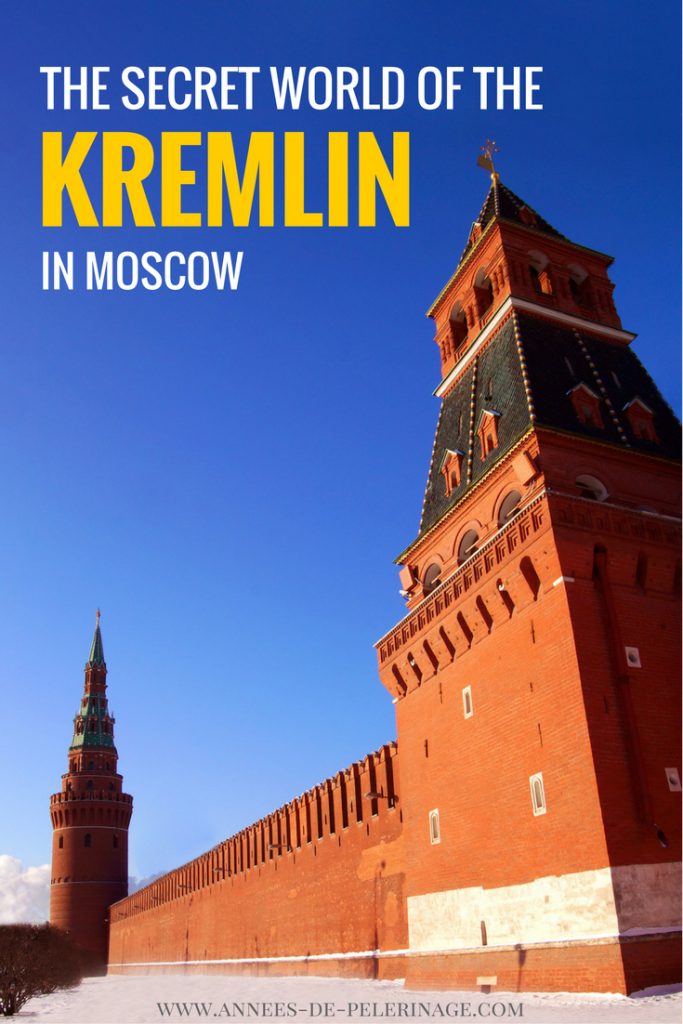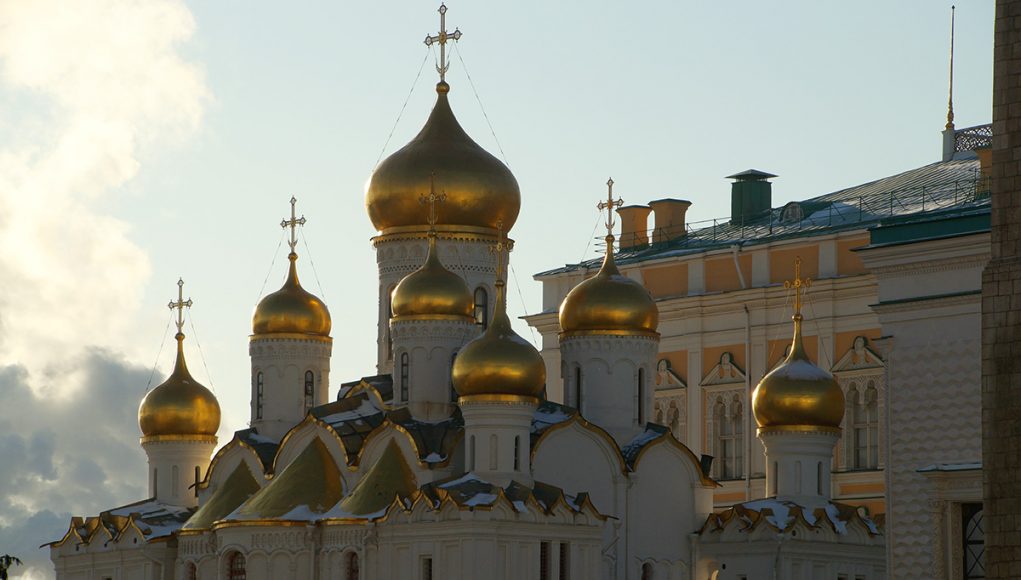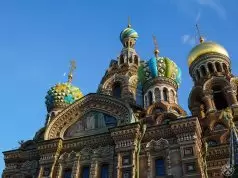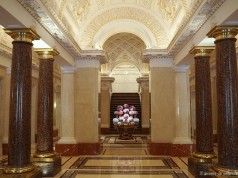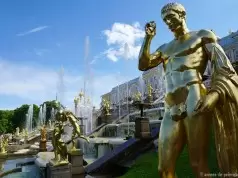All you need to know about visiting the Kremlin Palace and the Kremlin Armoury Museum.
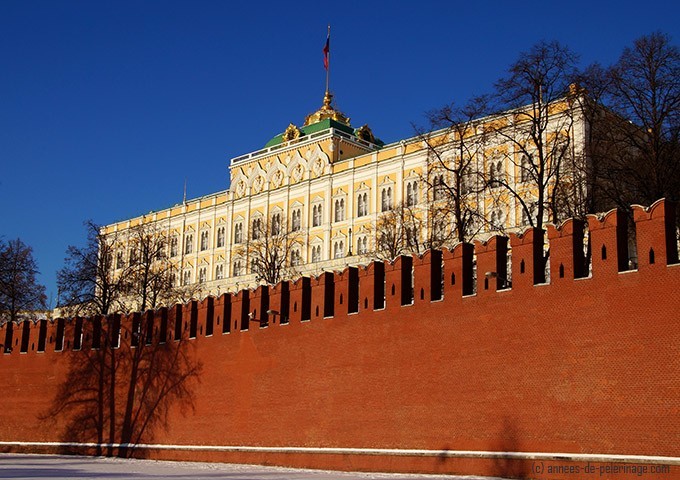
19 meters high and up to 6,5 meters thick – red brick walls hide one of the most impressive political seats of power in the world. From outside the Grand Kremlin Palace in Moscow looks forbidding, if not to say intimidating. But the political and cultural heart of the Russian Federation is anything but off limits. In fact, it is the single most visited tourist attraction in Russia’s Capital, despite being the official seat of President Putin. Even more surprising: unlike the White House, the Bundestag or the Imperial Palace in Tokyo you don’t even need to pre-register to enter. So who could say no?
I certainly couldn’t! Only the Kremlin will be able to give you a true impression of the ups and downs of Russian history. In no other place secular and ecclesiastical power, imperial luxury and the conformity of the soviets form such an intriguing juxtaposition.
_______________
Wondering what else to do in Moscow? Here are 10 spectacular things to do in Russia’s Capital.
A tour through the Grand Kremlin Palace in Moscow
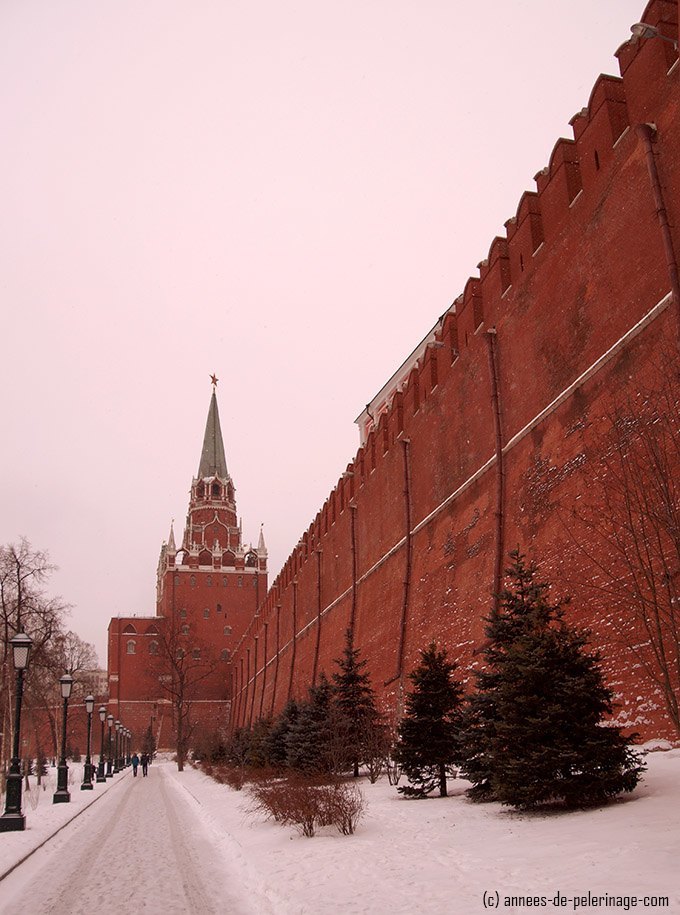
I entered the Kremlin through the Trinity Tower right in the middle of the sparse Alexander Garden on the east side. Sparse because what is called a garden, is, in fact, little else than a few doubtful trees sprinkled around an unremarkable lawn. But maybe the austerity has been intended. It certainly gives you the almost tangible impression that you are entering a citadel – which is, after all, the meaning of the word Kremlin in Russian.
The crimson gothic turret of the Trinity Tower reaches a height of more than 80 meters and is, by the feature of the bright red soviet star on its top, the tallest of all the twenty Kremlin towers. It serves as the only official entrance to the Kremlin Museum. Online tickets can be bought in advance, but either way, you will not be able to avoid the security scans right at the entrance – an endurable hassle I forgot as soon as I crossed the spacious bridge arching over the former moat of the Kremlin.
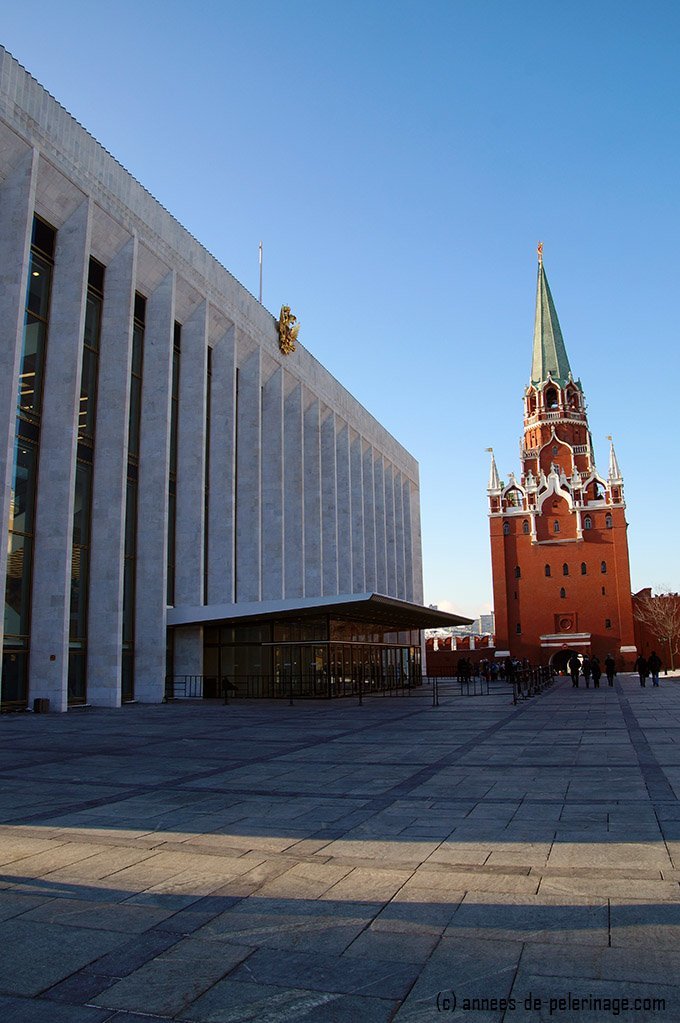
My first sight was the imposing State Kremlin Palace which stands right at the entrance. The name itself is quite misleading since the modern glass and concrete building dates back to 1961 and the darker days of soviet Russia. I didn’t stop here asking which ancient structures had to make way for Khrushchev’s dream about a contemporary arena for communist party meetings. Who would listen to such a question anyway, I silently wondered? If anything can and should be said, then, that the State Kremlin Palace will impress with its own architectural beauty.
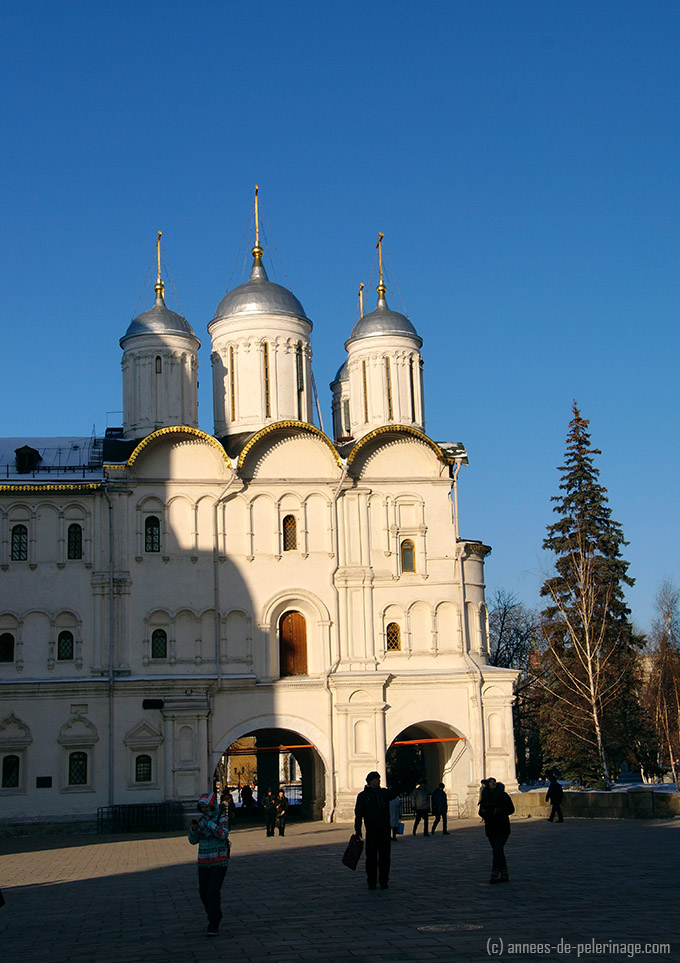
A wide paved road leads deeper into the Kremlin, armed soldiers flanking the way, where the bright silver domes of the Church of the Twelve Apostles will greet you. The Annex of that church used to be the Patriarch’s Palace and marks the entrance to the central square of the Kremlin. Now it houses one of the many museums within the red walls.
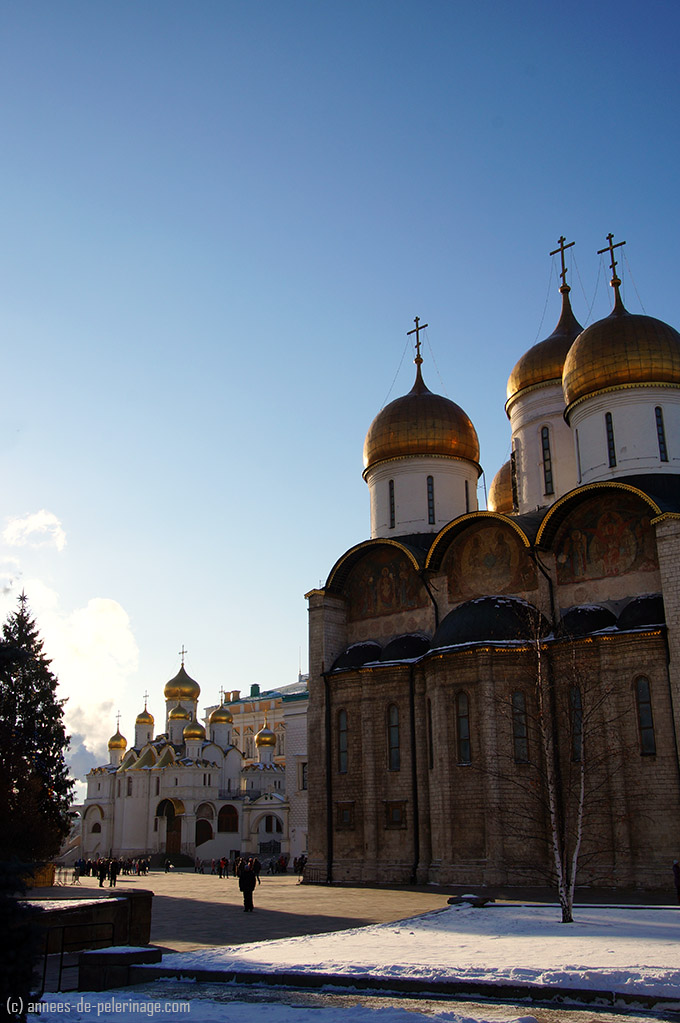
Yet this is not a place to linger but rather one to pass through. In the distance, the countless turrets of cathedral square already beckon with their golden splendor – each and every dome topped by a gleaming cross. If I was sentimental, then certainly this would have been the time to shed tears for all that has been lost at Kremlin throughout the centuries. Instead, however, I decided on cherishing that which has survived.
Cathedral Square inside the Kremlin
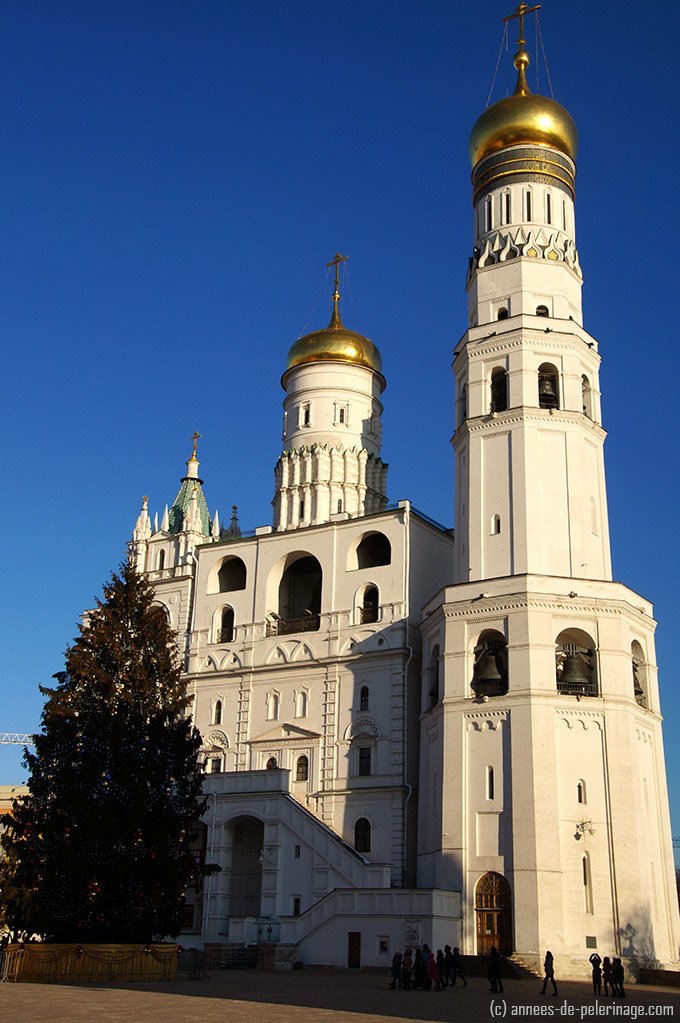
Six churches face this central square and with those six pristine examples of Russian orthodox culture, which, for a time, seemed all but lost to humanity. It’s hard to take a pick, so I will start with the highest of them all. The Great Bell-Tower of Ivan the Great has been the tallest building in Russia for almost 400 years and houses the Assumption Bell weighting impressive 70 tons. Know then, that none of these heavy-weights rang during the soviet times. The world had to wait until 1992 for the bells of Ivan the Great to resume their magnificent chime.
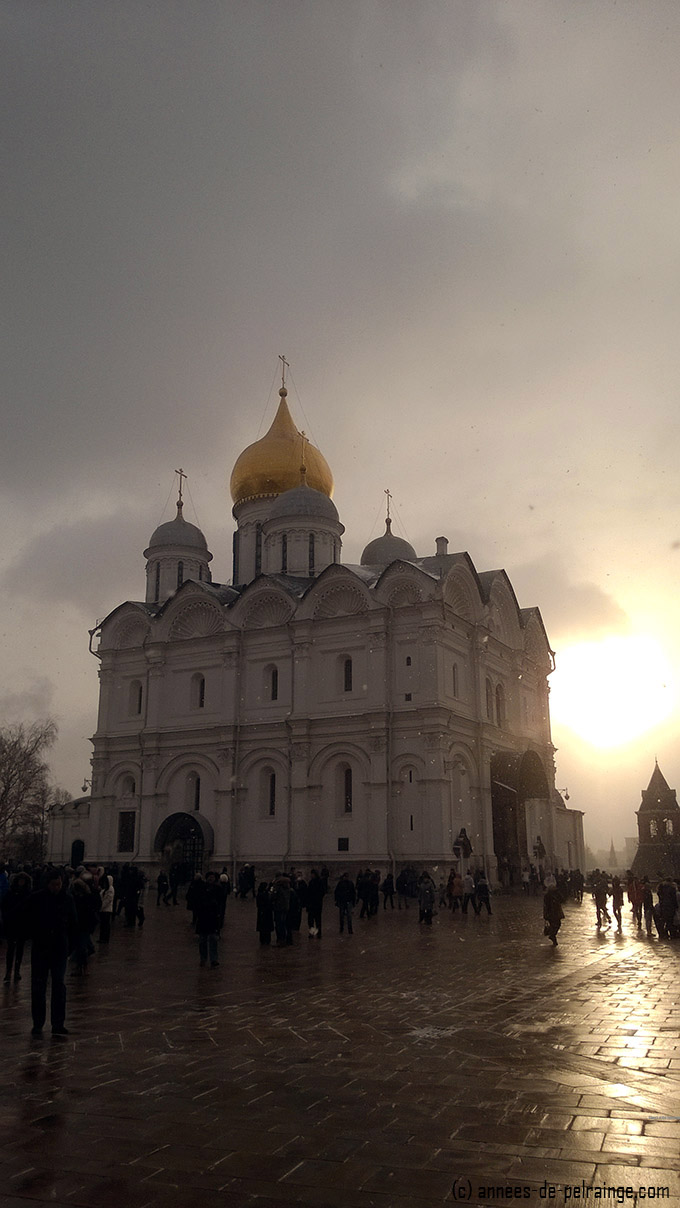
Facing the Great Bell-Tower to the right is the Cathedral of the Archangel. Archangel Michael, the worn pages of my tourist guide inform me, was the patron saint of the Muscovy dynasty and still guards the silver-golden domes of this precious architectonical gem.
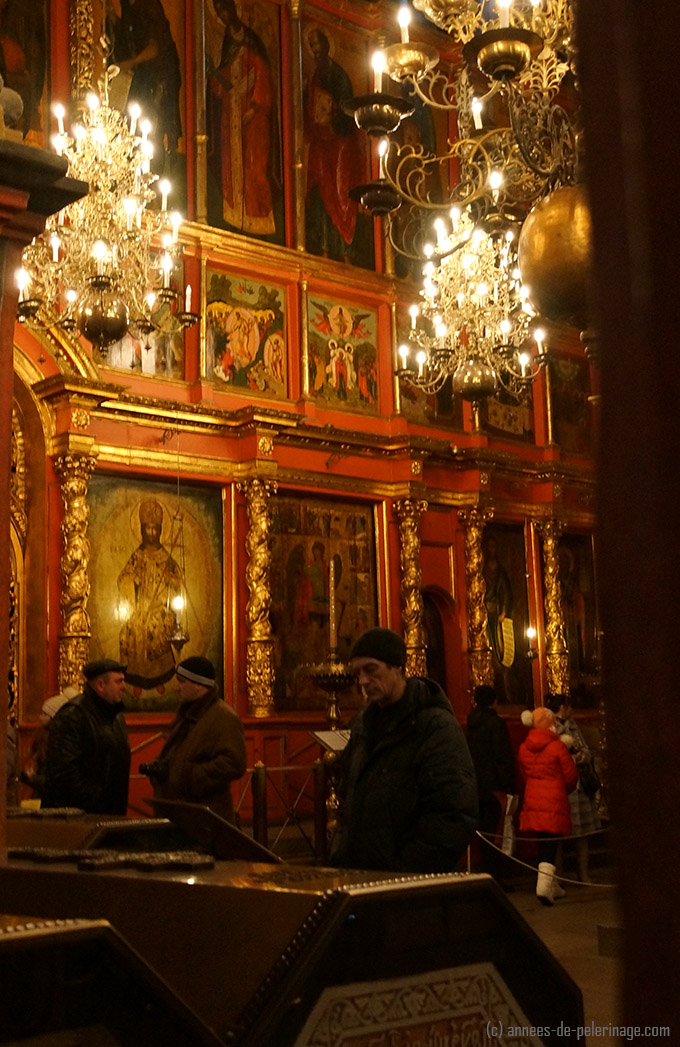
In this sacral building are entombed all the Russian monarchs up until Peter the Great, who then moved the capital to St. Petersburg (if you want to read about where later tsars were buried, read my report on Peter and Paul Fortress). The interiors of the Cathedral of the Archangel impress with a sinister atmosphere – and not only because of the 46 marble tombs littering every free inch of the floor. All walls are covered with a rich iconostasis dating back to the 17th century that almost, but not quite, make you forget that Ivan the Terrible found his final resting place here.
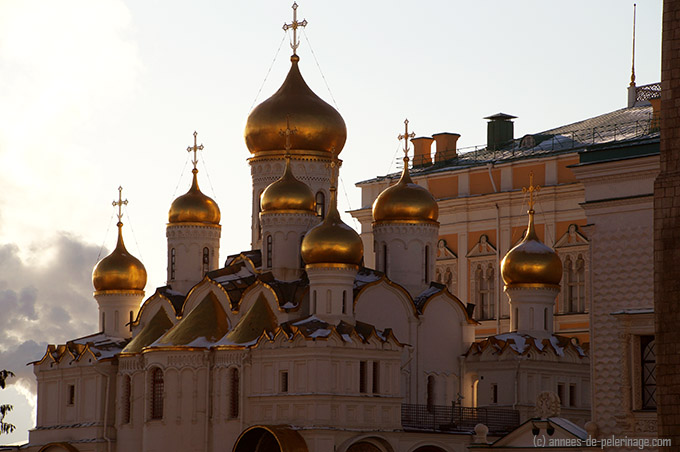
You have to look no further than 50 meters from the square to spot the next highlight. Here the onion shaped domes of the Cathedral of the Annunciation glitter away in golden sunlight and hide yet another magnificent iconostasis. It is worth noting that this Church has been in private use of the Grand Dukes and Tsars of the Russian empire. Low walls once connect the church with the palace forming a private passage, although these do not remain as if the church decided to cut all ties with its imperial past.
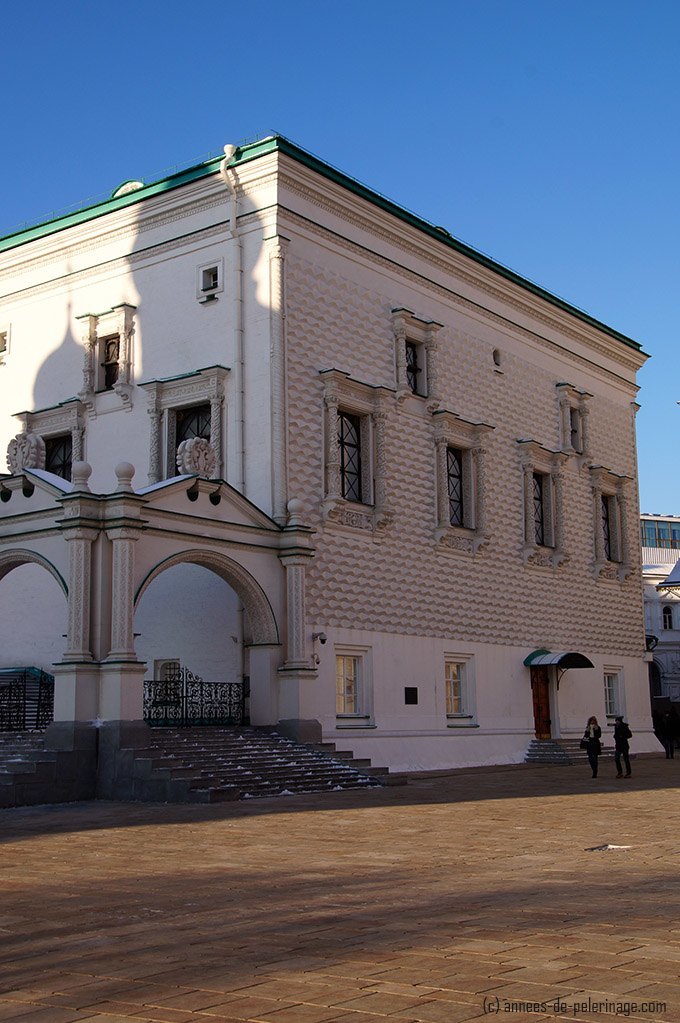
But any architectonical dissociation seems futile: The original palace of the tsars still stands against the backdrop of a new palatial addition to the Kremlin a few meters to the right. The Palace of Facet – by far the oldest surviving building of the Kremlin – was commissioned by Grand Duke Ivan II in 1487 and is quite an unlikely sight to behold. The angular shapes of its Renaissance front almost, but not quiet, form an offending contrast between ancient skill and ostentatious tsarist aspirations. Compared to the largeness around it, the small building, resting on its exposed semi-basement, verges in its architectonical insignificance almost on the comical. Yet this actually single tiered building served as the official Reception Hall for Tsar Ivan the Terrible, Peter the Great, and up to the state visit of Queen Elizabeth II in 1994.
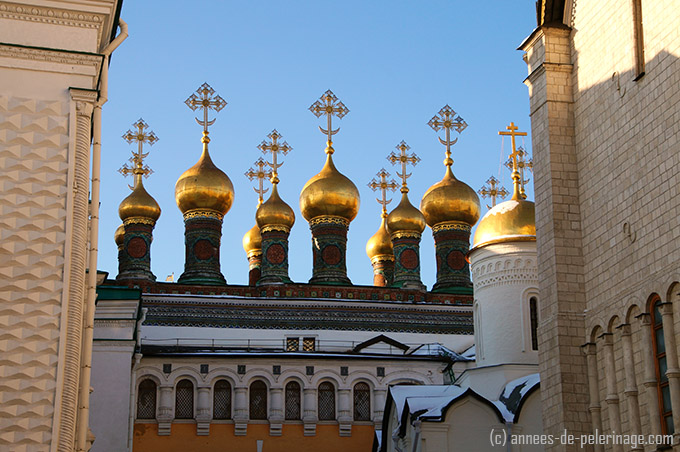
With a somewhat amused snort, I turn to the right where hidden behind the bend of a cobblestone alley, stands the Church of Laying our Lady’s Holy Robe. It is the smallest of them all and I only notice the narrow entrance because the many Moorish spires of the Terem Palace selected my interest.
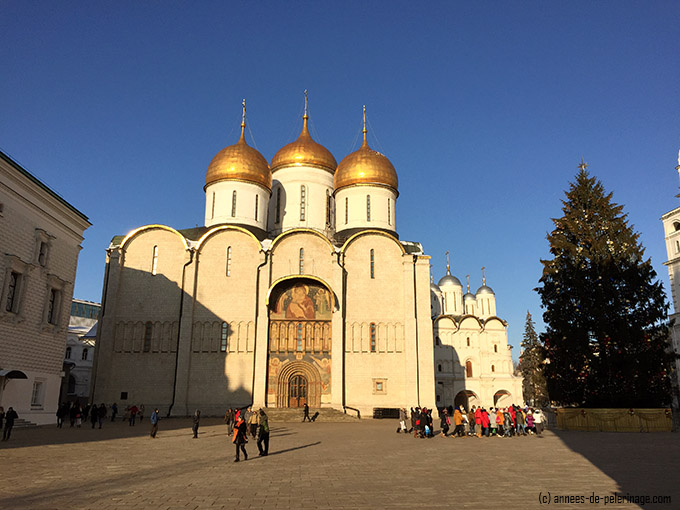
Perhaps the little church, that used to be the private church of the Patriarch, also fails to impress casual visitors because the blocky shape of the Assumption Cathedral dominates the vista. This Cathedral is particularly noteworthy because it actually has a real nave. From outside you can almost sense the enormity of its high inner hall, but still, nothing prepared me for the rich decoration covering every inch of the remarkably spacious walls (Read my report on St. Basil’s Cathedral on Red Square if you want to know more about regular Orthodox Church interiors).
The outstanding Kremlin Armoury Museum
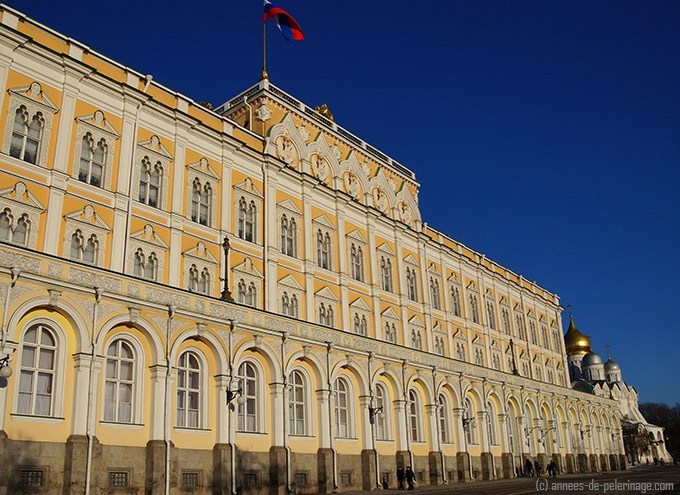
I would do the Kremlin and its museum’s little justice if I only mentioned its ancient sacral beauty. There are of course other famous sights. Most recognizable of them is perhaps the Grand Kremlin Palace. Here is, after all, where President Putin has his office.
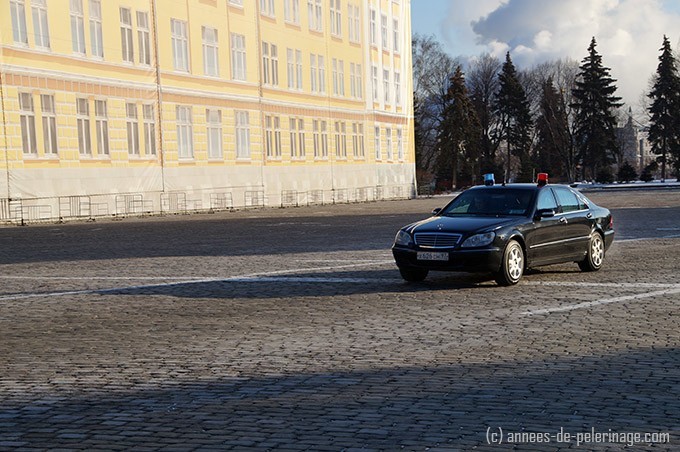
These days there is a helipad hidden in the courtyards but still you will ever so often see a limousine with blackened windows pass by. Is this one taking a minister to a meeting with Russia’s commander-in-chief? I do not know but fancied it to be true.
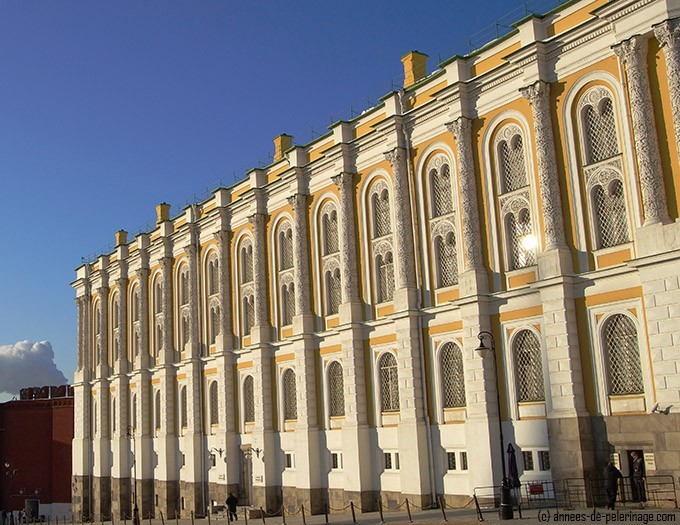
My ticket did not include a tour through the Grand Kremlin Palace – only a few prearranged tours will get you in. So instead I follow the closely guarded road along the heavy fundaments to another highlight among the inner walls: The Kremlin Armoury Museum. Strong walls featuring the most intricate masonry almost reminded me of a Riad in Morroco. Any maybe that isn’t too far off, because inside an almost alien world of gold, silver, and diamonds will quite literally take your breath away.
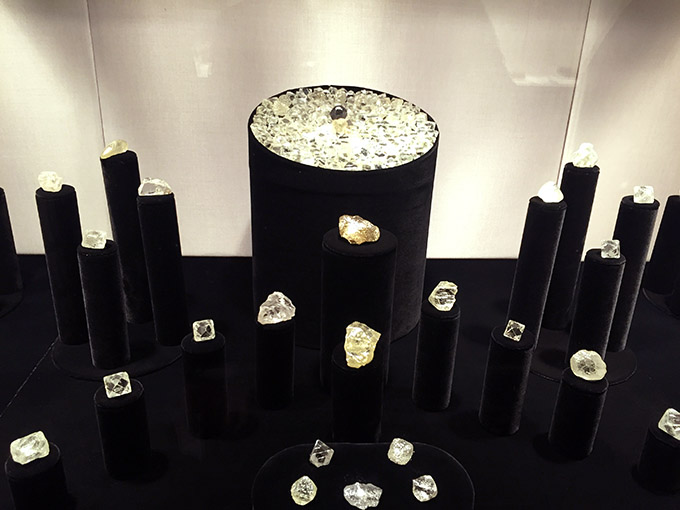
First of all, it houses the Diamond Fund. A truly unique collection of large diamonds is secured behind meter thick steel walls – among them crystal clear beauties like the 189 karat Orlov diamond, the Shah diamond and of course some of the Russian crown jewels. There is also an impressive collection of uncut diamonds that somewhat looks like broken glass. Soon the staggering realization will impress itself upon you that their worth, in fact, exceeds the millions – what a luxury to not cut and sell them!

The true gemstone of the Kremlin Armoury Museum is, however, the actual Armoury Chamber. The rooms date back to the 16th century when the building was still used as the royal arsenal. Here was where the imperial treasures were stored and produced by the finest craftsmen in the country. The later tradition did not persist throughout the ages. What still resides within are tons of gold in untold shapes and styles. The crown jewels of the collection, to labor another pun, are the crowns of the tsars. Fur, Gold, Gemstones – it almost made me physically grasp the power their wearers wielded during their reign.
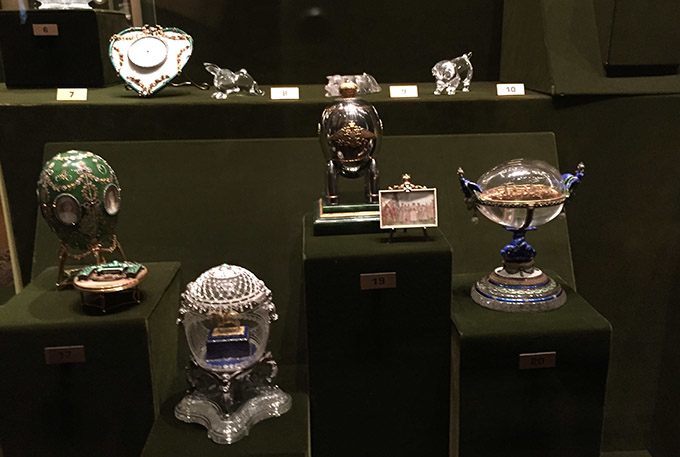
Sadly the museum might be in need of a renovation. While the collection is truly excellent, no outstanding, the cabinets appear a bit run down. Musty green velvet presents a clutter of precious Fabergé Eggs – each worth a couple of million dollars. Yet there is no way to breathe in this pinnacle of modern jewelry from all sides. No room is left in between exhibits to let them breathe, no detailed explanation is offered – neither through inscription nor through an audio guide. Compared to that the Hermitage in St. Petersburg (read my Hermitage guide here) even offers its own mobile app for visitors. “So why not here?” I silently asked. Sadly at the Kremlin Armoury time still seemingly stands still, wasting so much potential.
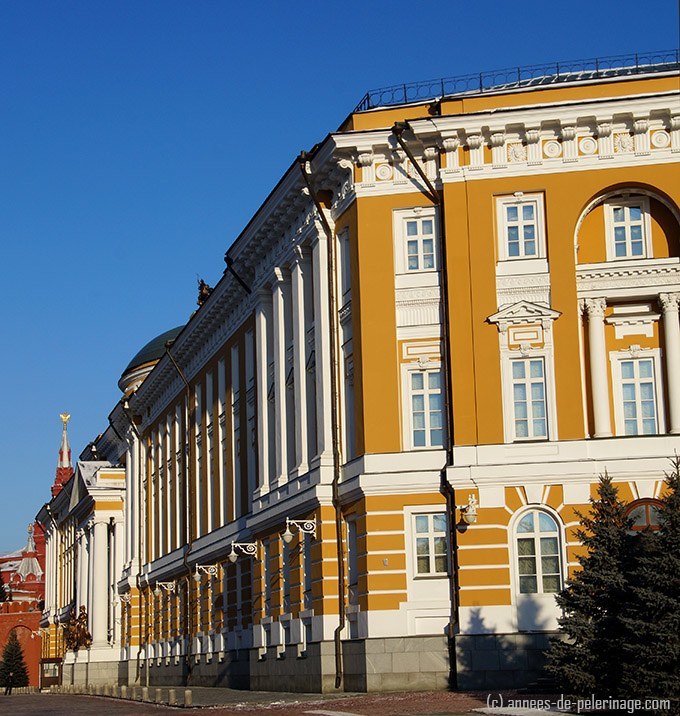
After the Kremlin Armoury Museum little of interest remains inside the Kremlin. The only building I really did not see on my tour through the Kremlin was the Senate. Home to the Russian presidential administration, it is a highly secured area. Armed military form a cordon around it, you will not be able to pass. I at least did not feel like trying my luck on taking a close-up picture.
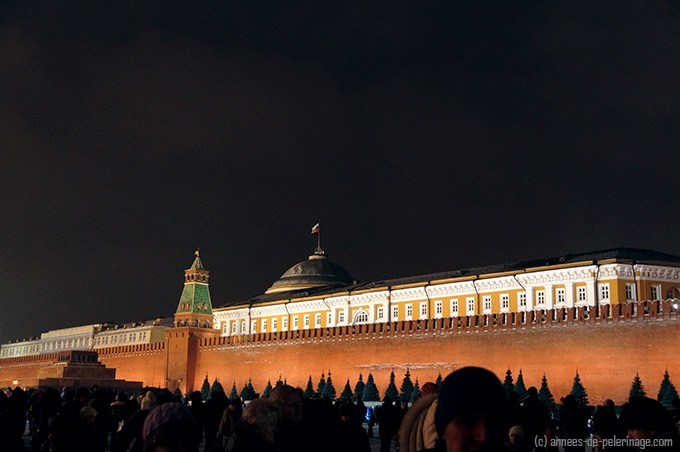
Since the Kremlin Senate is standing next to the wall facing the Red Square, the truest measure of its size can be taken from there. The rotunda hall with its 25-meter diameter has often been referred to as the Pantheon of Russia. I am not sure if the rather plump architecture can live up to its roman antitype, but certainly, it is another example of the sheer architectonical immensity offered inside high walls of the Kremlin.
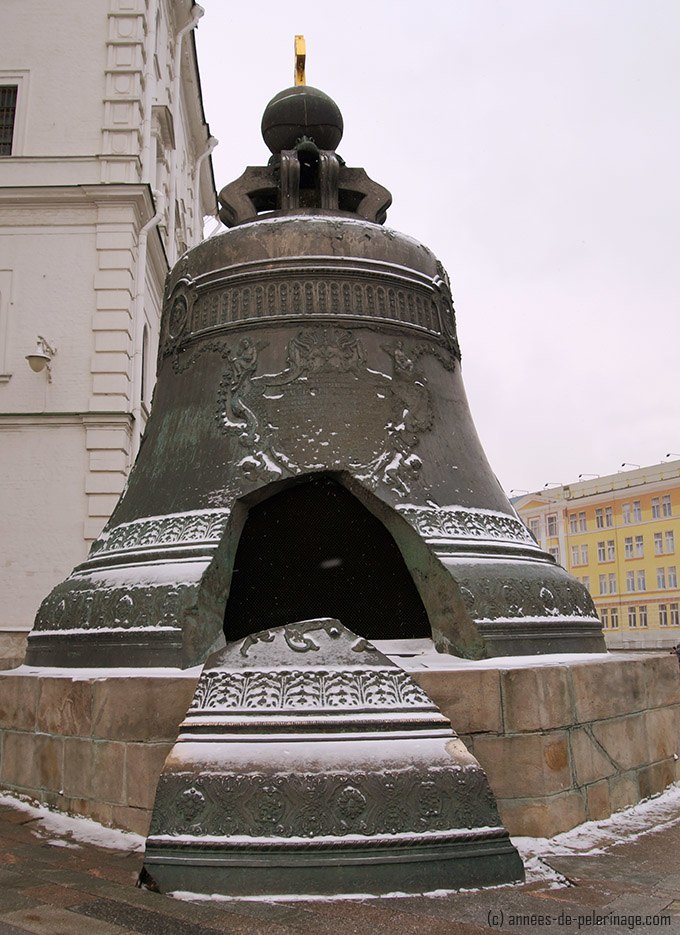
A speaking of size: A tour through the Kremlin, last but not least, should not do without mentioning the famous Tsar Bell. 201 Tons heavy, it is by far the largest bell in the world – even though it never had the chance to emit a sound. The bell cracked during the cooling process in 1737. Noteworthy are, perhaps, two facts: 525 kilograms of Silver and 72 kilograms of Gold are alloyed within the bronze, that even after its early demise, was so large it served as a chapel for a time.
Leaving the Kremlin through Borovitskaya Tower
It was already getting dark when I ended my tour of Kremlin through Borovitskaya Tower. But the multi-tiered brick tower is anything but the official exit. Instead, I’d refer to it as an insider’s tip. Because inside the Armoury hides another, less frequented ticket office – even though it will not appear in most official tourist guides. Naturally, my need for a ticket was done. Walking the cobbled stone ways of the Kremlin a full day really left me tired beyond description. But rushing through the many-facetted architectural highlights of Russia’s most intimate history seemed wrong. Every niche and granny seemingly attested that the centuries have not been kind to the largest country on earth. Who could blame me for wanting to explore them all?
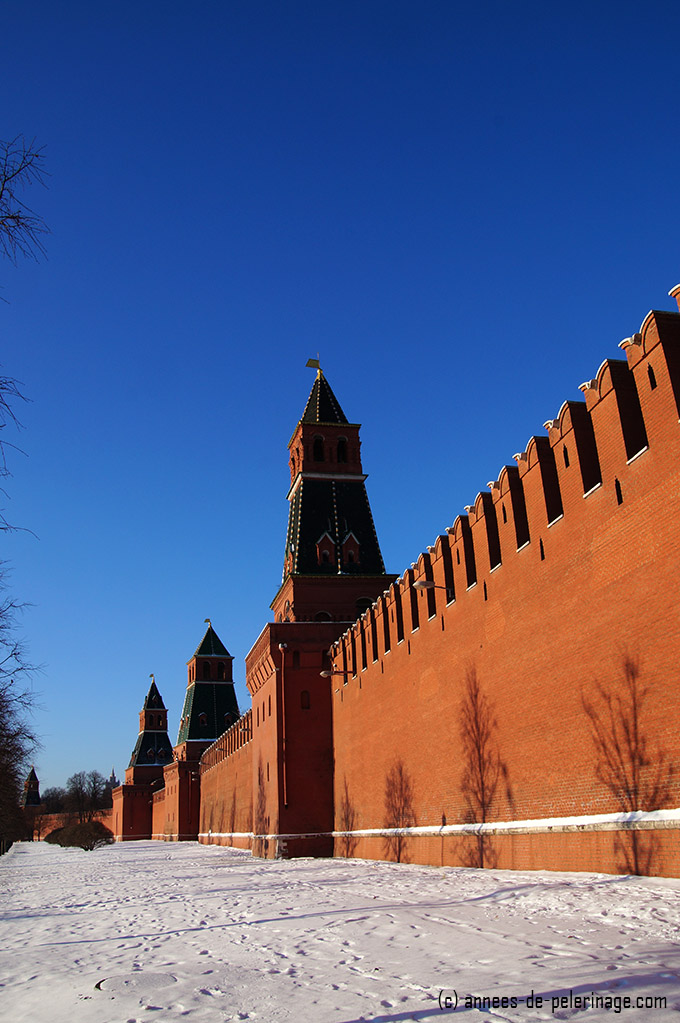
Now my own eyes have seen that the Kremlin has been repeatedly destroying by fire, ever succeeding tsars ordered ancient structures to be torn down to raise their mark on history – none of them lasting, they should have known. For two centuries the imperial court even moved to St. Petersburg, neglecting the Kremlin altogether, while Napoleon decided to blow the whole thing up (which luckily failed for the most part).
Stalin, then, elected to refurbish everything according to his tastes – wanting nothing to remind him of the imperial times. And last but not least things have been, and to some degrees still are, quite uncertain after the fall of the iron curtain, where new offices had to be defended on the sprawling grounds. But I can attest that Russia’s ancient heart is still beating – and it isn’t a weak beat. It’s time for you to explore its ever-adapting rhythm!
_______
Want to read where other Monarchs used to live? Here are more u
nique articles for you:
> The Forbidden City in Beijing – Exploring China’s past
> The Imperial Palace Tokyo – a travel guide for visitors
